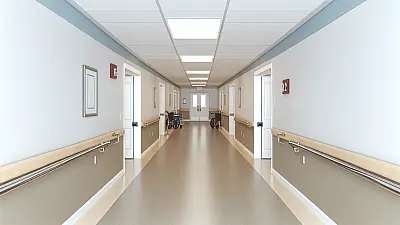LAKE PROVIDENCE, LA - State health inspectors found that Shady Lake Nursing Home failed to implement proper interventions or update care plans after a resident with cognitive and mobility challenges fell from their wheelchair, according to a recent inspection report.

Care Planning Failures Following Fall Incident
The inspection conducted on May 21, 2025, revealed significant lapses in the facility's response to a fall involving Resident #13, who had been identified as being at risk for falls. Despite the resident being found "sitting on the floor in front of his wheelchair" on April 22, 2025, the facility took no documented action to prevent future incidents.
Medical records showed that Resident #13 had a Brief Interview for Mental Status (BIMS) score of 14, indicating intact cognitive abilities for daily decision-making. The resident required partial to moderate assistance with basic activities including toileting and bathing. A formal fall risk assessment had already identified this individual as vulnerable to falls before the April incident occurred.
When state inspectors reviewed the facility's documentation nearly a month after the fall, they discovered no evidence of any intervention attempts following the incident. The facility's Director of Nursing confirmed during the inspection that "no new interventions were attempted after Resident #13 had a fall" and acknowledged that the incident was never incorporated into the resident's care plan.
Medical Implications of Inadequate Fall Response
The failure to implement preventive measures after a fall represents a serious breach of standard nursing home protocols. When residents experience falls, immediate reassessment and care plan modifications are essential to prevent recurrence. Falls in elderly populations can lead to fractures, head injuries, decreased mobility, and psychological effects including fear of falling that can further limit independence.
For residents with limited physical mobility who require assistance with daily activities, each fall incident should trigger a comprehensive review of their current support systems, mobility aids, and environmental factors. The absence of such review leaves vulnerable residents at continued risk for subsequent falls, which typically become more frequent and severe without intervention.
Standard practice requires facilities to conduct root cause analysis after fall incidents, examining factors such as medication effects, environmental hazards, staffing patterns during high-risk times, and the adequacy of current mobility assistance. The care plan should then be updated to reflect new strategies based on these findings.
Documentation and Quality Assurance Breakdowns
The inspection findings point to systemic problems in the facility's quality assurance processes. Proper documentation serves multiple critical functions in nursing home care: it ensures continuity of care across shifts, provides legal protection for both residents and facilities, and enables tracking of patterns that might indicate broader safety issues.
The complete absence of documented interventions following the April 22 incident suggests potential gaps in staff training, communication protocols, or administrative oversight. Care plans function as living documents that must evolve with residents' changing needs and circumstances. When facilities fail to update these plans after significant events like falls, staff members lack essential guidance for providing appropriate care.
Industry standards dictate that fall incidents should prompt immediate assessment for injuries, notification of physicians and family members when appropriate, and development of targeted interventions within 24-48 hours. These interventions might include increased supervision during transfers, adjustment of wheelchair positioning, physical therapy evaluation, or environmental modifications such as improved lighting or removal of trip hazards.
Regulatory Compliance and Resident Safety
The violations identified at Shady Lake Nursing Home fall under federal regulation F689, which requires facilities to ensure resident safety and provide care that maintains or improves residents' abilities to carry out daily life activities. The regulation specifically mandates that facilities must develop comprehensive care plans that address identified risks and update these plans when residents experience changes in condition or incidents that affect their safety.
The inspection report's classification of these violations as affecting "some" residents with "minimal harm or potential for actual harm" understates the serious nature of inadequate fall prevention protocols. Research consistently shows that previous falls are the strongest predictor of future falls, making the facility's failure to respond particularly concerning.
For complete details about all violations found during this inspection, readers can access the full state survey report through the Centers for Medicare & Medicaid Services database.
Full Inspection Report
The details above represent a summary of key findings. View the complete inspection report for Shady Lake Nursing Home from 2025-05-21 including all violations, facility responses, and corrective action plans.
💬 Join the Discussion
Comments are moderated. Please keep discussions respectful and relevant to nursing home care quality.